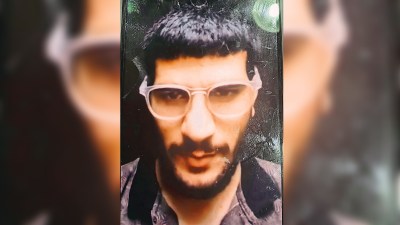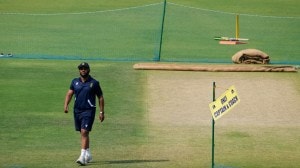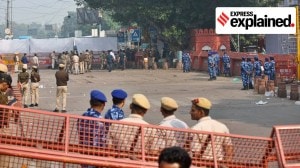Among cricket’s ace batsmen, Lara is the trump card
In the lazy days of steamboat travel, when batting technique and ability were more important than averages, and sponsorships as well as jet ...

In the lazy days of steamboat travel, when batting technique and ability were more important than averages, and sponsorships as well as jet travel and computers were a matter of crystal-ball gazing, Australia had a couple of formidable batsmen. One was Don Bradman, the other Bill Ponsford: both with individual scores of plus 400 in the credit column.
Any World XI of those years would contain both, as well as a couple of West Indians, the highly athletic all-rounder Leary Constantine and the compact George Headley, also known as the Black Bradman. The rest of the side would be filled by Australian and England players with the occasional South African, most likely Dudley Nourse. No need to haggle about the rest.
Seventy years on, through the lists and rankings, the World XI for 2003 should contain at least two Indians, perhaps three Safs, a Sri Lankan, a Pakistani, a West Indian and maybe four Australians at a push with a couple likely to get a mention but no place. And, to be a touch contrary with the current rankings, space would need to be found for Sachin Tendulkar, out of the top 10 batsmen in the PriceWaterhouse list for the first time in almost a decade.
However, the one who evokes most excitement is the ever-mercurial left-handed Brian Lara. He is the one batsman among the top six remarkably different: the batsman with the touch of genuine genius and with the innovative ability to excite, yet disappoint. It is not that his technique is better than that of Tendulkar’s, Rahul Dravid’s or either Matthew Hayden or Ricky Ponting. It is that his batting psyche carries the mental flaws of the great West Indies batsmen who have gone before.
One of the major differences of the way today’s game is played to that of the years from the mid-1950s to the early 1980s, is that the pace is faster: runs are scored at a rate above three an over and it has recreated a spectator interest in most countries excepting South Africa, where there is indifference in areas where a Test-watching culture existed.
Mention Bradman and Ponsford, Hayden and most other current Australian batsmen down the years as well as the current favoured Indian trio and you find that, while styles are different, there is a meticulous similarity about the way they bat. Sure there is flair; there is also a matter of individual preference in how they play their strokes.
Lara, however, has the ability to do it differently and give it that added touch of flamboyance, which is distinctively West Indian as opposed to the tired coaching methods of the English coaching structure. While his handwork has improved since his early days, Lara’s ability to take on the responsibility of leadership a second time and handle it with the panache of a veteran shows how much he has matured. It has made him a better player and more aware how much his input is needed.
There are Lara styles which are noticeably different to those of others. At Test level he is not one to be intimidated and it shows. He knows how to thrill a crowd as well as put fear into a captain’s mind and doubts into a bowler’s psyche. Take the world Test record of 28 runs off the Robin Petersen over at The Wanderers last month. It was instinctive but full of rich strokeplay, fluent with touches of almost loquacious mannerisms.
There was none of the clinical proficiency you might expect of, say, a Tendulkar and Dravid. Being short, Tendulkar minimises footwork, yet his hands and straight bat make up for the need to perform like a ballet dancer as at times does Lara.
Then again, the West Indian limited-overs technique leaves its own forceful imprint: that of a fast-food delivery style which is unmistakeably dominating and always looking for the gaps through which to pick off his runs.
One Indian who is similar in style and a cynosure for others to follow when in full flow is VVS Laxman. Like Lara, he shows how style and class also measure up to personal expectations. At least Laxman knows he has others who can put big runs on the board; Lara these days carries the weight of a side still struggling to find its character as well as identity.
LIFE & TIMES OF A GENIUS
• 1969: Born the youngest of seven brothers in a family of 11 in Santa Cruz, Trinidad
• 1984: Plays U-19 representative cricket in Trinidad
• 1987: First class debut for Trinidad. Captains West Indies U-23s against Pakistan
• 1990: Debuts for West Indies against Pakistan at Lahore on December 6. Scores 44 and 5. Debuts in ODIs on the same tour
• 1993: On January 4, he hits first Test century – 277 – against Australia at Sydney
• 1994: On April 18, hits highest-ever Test score (375) against England at St John’s. It’s only his third Test century
• 1994: Records highest first-class score (501 not out) for Warwickshire against Durham on June 6, beating Hanif Mohammed’s 499
• 1995: Walks out of West Indies’ tour of England in August after dressing room row at end of the fourth Test but is persuaded to rejoin party four days later
• 1996: Reprimanded by WI Board for remarks attributed to him following a World Cup defeat by Kenya and for altercation with team physio Dennis Waight on flight from Bombay to London following World Cup
• 1998 (Jan): Named as West Indies captain against England at home, leading side to 3-1 Test series victory
• 1998 (Nov): Sacked as captain when players’ revolt over pay delays start to tour of South Africa but is reinstated as skipper after four days of talks end impasse. West Indies lose Tests series 5-0 and ODI series 6-1
• 1999: Scores first Test century for a year (213 in Kingston) to lead WI to victory in second Test against Australia (March). Scores unbeaten 153 as West Indies, for only the fourth time, scores more than 300 in the fourth innings to win a Test
|
TESTS
|
|||||||||
| M | I | NO | RUNS | HS | Ave | SR | 100 | 50 | |
| 100 | 176 | 5 | 8916 | 375 | 52.14 | 59.78 | 23 | 42 | |
| ONE-DAY INTERNATIONALS | |||||||||
| M | I | NO | RUNS | HS | Ave | SR | 100 | 50 | |
| 224 | 219 | 23 | 8437 | 169 | 43.04 | 79.15 | 18 | 52 | |





- 01
- 02
- 03
- 04
- 05


























